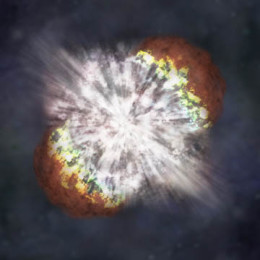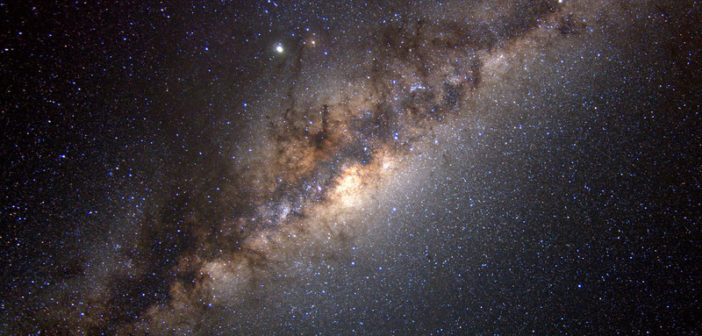Editor’s note: Astrobites is a graduate-student-run organization that digests astrophysical literature for undergraduate students. As part of the partnership between the AAS and astrobites, we occasionally repost astrobites content here at AAS Nova. We hope you enjoy this post from astrobites; the original can be viewed at astrobites.org.
Title: The Mass Inflow and Outflow Rates of the Milky Way
Authors: Andrew J. Fox et al.
First Author’s Institution: AURA for ESA, Space Telescope Science Institute
Status: Accepted to ApJ
Galaxies are so large that it can be hard to imagine them changing over time. However, we believe that galaxies are living and breathing entities, accreting and ejecting mass all throughout their lives. The Milky Way is no exception. Characterizing the rates of mass flow and the mass loading factor for galaxies, though, is crucial to understanding the details of this so-called galactic fountain model. In today’s paper, the authors provide new estimates of these rates for the Milky Way. They also present the first estimate of the mass loading factor (the ratio of material flowing out of the galaxy to the star formation rate) for the outflowing material from the entire Milky Way disk. Essentially, this measures how efficiently the Milky Way recycles the gas it takes from its surroundings. These are very cool results, so let’s break down exactly what they mean.
Why Is Mass Flowing In and Out of a Galaxy?

Artist’s illustration of a supernova, a type of stellar feedback that can remove mass from our galaxy. [NASA/CXC/M. Weiss]
That Sounds Complicated. How Do the Authors Figure Out Which Gas Is Going In and Out?
Great question! Unfortunately, none of the gas travels with a bumper sticker that says ‘Milky Way Bound’. This means that the authors need to figure out which gas is likely to escape the Milky Way and which is likely to fall back in. They do this by identifying high-velocity clouds (HVCs) of gas that are traveling faster than the rotational speed of the Milky Way’s disk, meaning that they must represent inflowing or outflowing gas. Once they have identified a HVC, they check whether the cloud is moving towards the galactic disk or away from it. Finally, they ignore HVCs that are known to reside in structures (such as the Fermi Bubbles) that don’t trace the inflowing or outflowing gas. The final sample of HVCs is shown in Figure 1.

Figure 1: Plot of all HVCs identified in the paper. Inflowing clouds are shown in blue, outflowing clouds are shown in red, and the green regions show areas in which HVCs were ignored as they would not trace the inflowing or outflowing gas well. Black points show observations in which no HVCs were detected. [Fox et al. 2019]
What Were The Results?
The authors estimate the inflow rate to be 0.53 +/- 0.31 solar masses per year and the outflow rate to be 0.16 +/- 0.10 solar masses per year. This means that the Milky Way currently appears to have a net inflow of gas. HVCs only have lifetimes on the order of 100 million years, so it is important to note that this result should not be extended to very long timescales. Furthermore, the outflow rate is a lower limit; the true outflow rate could be higher if other regions like the Fermi Bubbles are included. Nevertheless, this exciting result provides evidence that the Milky Way disk may currently be gaining mass.
The paper also presents an estimate for the mass loading factor of roughly 0.1 using an independent measurement of the Milky Way’s star formation rate. This means that roughly 10% of the mass that forms stars is ejected back out of the galaxy. This result, together with the measurements of the inflow and outflow rates, can all help astronomers get closer to building a realistic model of the Milky Way.
About the author, Michael Foley:
I’m a graduate student studying astrophysics at Harvard University. My research focuses on using simulations and observations to study stellar feedback — the effects of the light and matter ejected by stars into their surroundings. I’m interested in learning how these effects can influence further star and galaxy formation and evolution. Outside of research, I’m really passionate about education, music, and free food.
